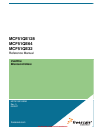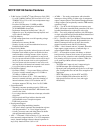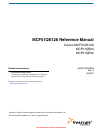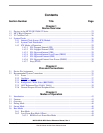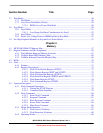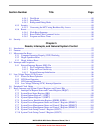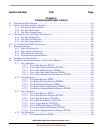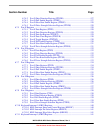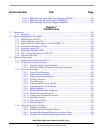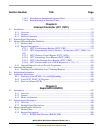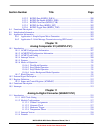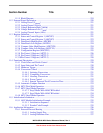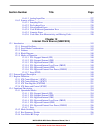
Get the latest version from freescale.com
MCF51QE128 Series Features
• 32-Bit Version 1 ColdFire
®
Central Processor Unit (CPU)
– Up to 50.33-MHz ColdFire CPU from 3.6V to 2.1V, and
20-MHz CPU at 2.1V to 1.8V across temperature range
of -40°C to 85°C
– Provides 0.94 Dhrystone 2.1 MIPS per MHz
performance when running from internal RAM
(0.76 DMIPS/MHz from flash)
– Implements Instruction Set Revision C (ISA_C)
– Support for up to 30 peripheral interrupt requests and
seven software interrupts
•On-Chip Memory
– Flash read/program/erase over full operating voltage
and temperature
– Random-access memory (RAM)
– Security circuitry to prevent unauthorized access to
RAM and flash contents
• Power-Saving Modes
– Two low power stop modes; reduced power wait mode
– Peripheral clock enable register can disable clocks to
unused modules, reducing currents; allows clocks to
remain enabled to specific peripherals in stop3 mode
– Very low power external oscillator can be used in stop3
mode to provide accurate clock to active peripherals
– Very low power real time counter for use in run, wait,
and stop modes with internal and external clock sources
–6 μs typical wake up time from stop modes
• Clock Source Options
– Oscillator (XOSC) — Loop-control Pierce oscillator;
Crystal or ceramic resonator range of 31.25 kHz to
38.4 kHz or 1 MHz to 16 MHz
– Internal Clock Source (ICS) — FLL controlled by
internal or external reference; precision trimming of
internal reference allows 0.2% resolution and 2%
deviation; supports CPU freq. from 2 to 50.33 MHz
• System Protection
– Watchdog computer operating properly (COP) reset
with option to run from dedicated 1-kHz internal clock
source or bus clock
– Low-voltage detection with reset or interrupt; selectable
trip points
– Illegal opcode and illegal address detection with
programmable reset or exception response
– Flash block protection
• Development Support
– Single-wire background debug interface
– 4 PC plus 2 address (optional data) breakpoint registers
with programmable 1- or 2-level trigger response
– 64-entry processor status and debug data trace buffer
with programmable start/stop conditions
• ADC — 24-channel, 12-bit resolution; 2.5 μs conversion
time; automatic compare function; 1.7 mV/°C temperature
sensor; internal bandgap reference channel; operation in
stop3; fully functional from 3.6V to 1.8V
• ACMPx — Two analog comparators with selectable
interrupt on rising, falling, or either edge of comparator
output; compare option to fixed internal bandgap reference
voltage; outputs can be optionally routed to TPM module;
operation in stop3
• SCIx — Two SCIs with full duplex non-return to zero
(NRZ); LIN master extended break generation; LIN slave
extended break detection; wake up on active edge
• SPIx— Two serial peripheral interfaces with Full-duplex
or single-wire bidirectional; Double-buffered transmit and
receive; MSB-first or LSB-first shifting
• IICx — Two IICs with; Up to 100 kbps with maximum bus
loading; Multi-master operation; Programmable slave
address; Interrupt driven byte-by-byte data transfer;
supports broadcast mode and 10 bit addressing
• TPMx — One 6-channel and two 3-channel; Selectable
input capture, output compare, or buffered edge- or
center-aligned PWMs on each channel
• RTC — 8-bit modulus counter with binary or decimal
based prescaler; External clock source for precise time
base, time-of-day, calendar or task scheduling functions;
Free running on-chip low power oscillator (1 kHz) for
cyclic wake-up without external components
• Input/Output
– 70 GPIOs and 1 input-only and 1 output-only pin
– 16 KBI interrupts with selectable polarity
– Hysteresis and configurable pull-up device on all input
pins; Configurable slew rate and drive strength on all
output pins.
– SET/CLR registers on 16 pins (PTC and PTE)
– 16 bits of Rapid GPIO connected to the CPU’s
high-speed local bus with set, clear, and toggle
functionality



